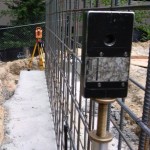“ENERGY STAR? I thought that was just for refrigerators!”
As many people now realize, the ENERGY STAR program isn’t just for appliances; it’s also a respected energy efficiency program for new homes and is the basis for most green home programs. Based on building science, the ENERGY STAR new home program has strict guidelines for energy efficiency set by the US Environmental Protection Agency.
ENERGY STAR qualified homes feature:
- Properly-installed, advanced insulation
- High-performance windows
- High-efficiency and correctly-sized heating and cooling equipment
- Tightly-sealed ducts and tight construction.
- Independent testing and inspections for compliance by a third-party company
Why do these features make such a big difference?
Properly-installed insulation helps keep temperatures even throughout the house, increasing comfort and lowering energy bills. Building science research has shown that even small deficiencies in insulation installation make a significant difference in insulation performance – and almost all non-ENERGY STAR homes have poorly-installed insulation. Every ENERGY STAR home’s insulation is inspected by an independent rating company and if it is not up to ENERGY STAR’s standards, it has to be fixed.
Advanced, high-performance windows use protective coatings and improved frame assemblies to help keep heat out during the summer and in during the winter. They also block damaging ultraviolet rays that can discolor carpet and furniture.
High-efficiency and correctly-sized HVAC systems use less energy and help increase comfort in a home. Correct sizing insures efficient performance and lowers bills. Especially important in North Carolina, proper sizing helps reduce humidity levels in your home, increasing comfort and decreasing energy bills.
Tightly-sealed ducts make a huge difference in both comfort and indoor air quality while lowering energy bills. Leaky ducts can introduce pollutants, moisture and mold into a house and if leaky ducts are in your crawl space, that crawl space air is being pulled into your home. In addition, duct leaks can cause unbalanced pressures that increase air infiltration into your home. In some studies, sealing ducts reduced cooling bills by about 33%.
Tight construction increases comfort and decreases energy bills. A tight house is much less drafty and has better indoor air quality. Air leakage in the top plane of the house sets up stack effect, pulling in air from the bottom part of the house – many times from the crawl space and/or garage. This leakage can account for 5% to 40% of the costs to heat and cool buildings, so it’s not a minor thing.
Independent testing and inspections by certified home energy raters make sure the home meets ENERGY STAR standards. Each home is individually inspected and tested by an independent home energy rating company utilizing scientific equipment and state-of-the-art software. These inspections include at least one insulation and building component inspection before drywall to make sure all the “under the drywall” items meet ENERGY STAR’s specifications. In addition, each home has final diagnostic testing using a blower door and duct blaster to make sure air infiltration and duct leakage are within ENERGY STAR’s limits. This insures that the new homeowner will have a comfortable, healthy and efficient home.
Author: Cass Arble – Brightcut Building Solutions, LLC




